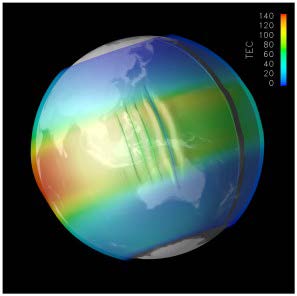
Ionospheric irregularities are an important process in understanding space weather at earth. Plasma in the ionosphere can be unstable, leading to growth of waves. This can lead to turbulence in the plasma, as well as large scale “irregular” structures like plasma bubbles (100-1000 km in size!). These irregularities affect the propagation of radio and satellite signals, and can even lead to errors in GPS positioning! The MISTI CubeSat Constellation takes a look at this process.

The MISTI CubeSat Constellation consists of four 3U (10cm x 10cm x 30cm) CubeSats that will orbit the earth. Its goal is to study how plasma instabilities and turbulence at different altitudes in the ionosphere couple with each other, and how they effect Global Navigation Systems like GPS. They are each equipped with a radio sounder to measure the plasma density, and GPS receivers that can measure the characteristics of turbulence and the total electron content along the signal path between each GPS satellite and each MISTI satellite. This allows us to create a “grid” of measurements where we can map the location of these irregularities, as well as their characteristics. MISTI has been selected by NASA for the formulation phase of the Heliophysics Flight Opportunities in Research and Technology program.